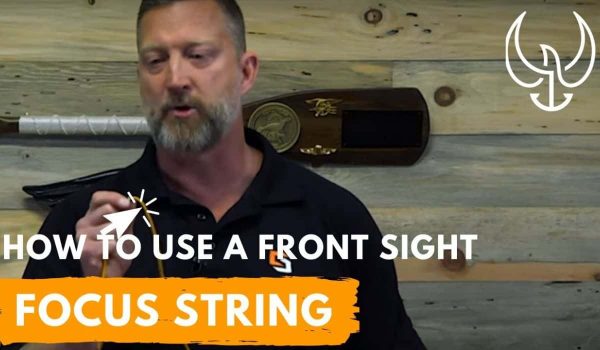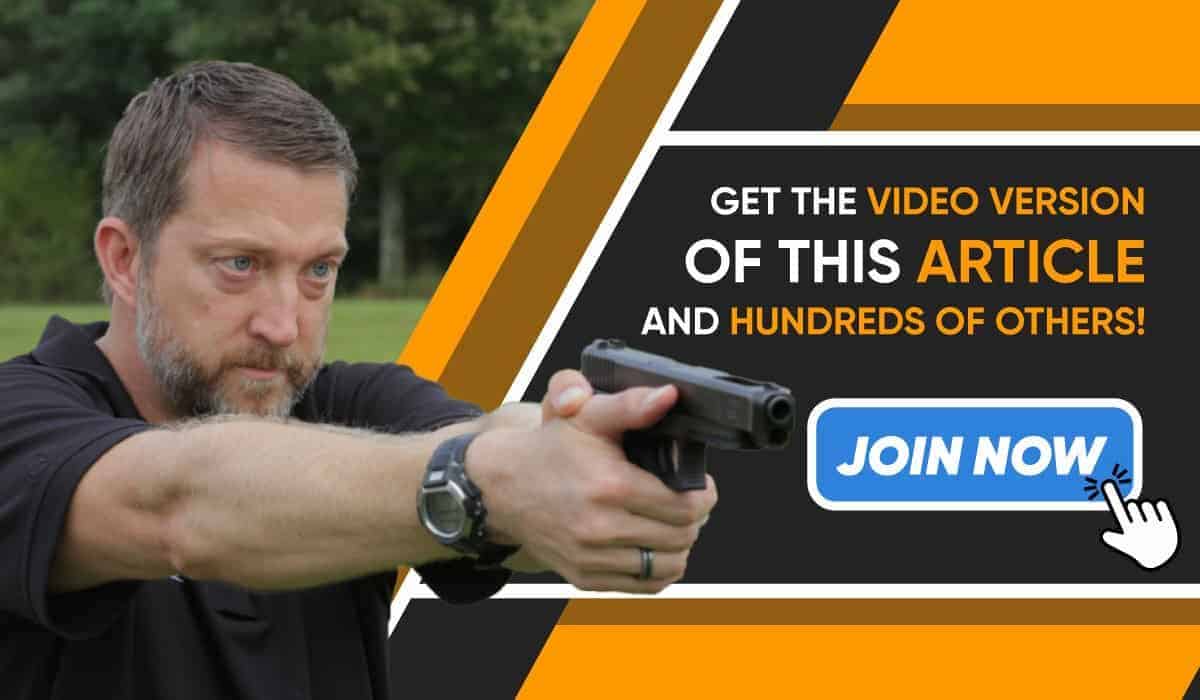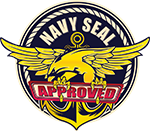Front Sight Focus String to Improve Your Shooting

Hey guys, Chris Sajnog here, best-selling author of How to Shoot Like a Navy Seal, Navy SEAL shooting, and the founder of The New Rules of Marksmanship. In this post, I want to just quickly teach you how to use a front sight focus string, and why it’s important. So let’s go ahead and get started.
Alright, so why is actually learning to focus important? When it comes to hitting your target, it is critical to be able to focus on your front sight post when you’re using open sights.
So you’ve got a front sight post and a rear sight post, and learning to focus is critical. By being able to do that, you’re going to be able to hit your targets. You’re going to be able to do it super accurately and a lot faster.
How It Works
To start off, I’m going to give you this scientific explanation of how this focus string and using it is actually going to help. It is going to teach you to increase awareness of the vergence of the aiming system and how it coordinates with an accommodative focusing system to develop voluntary control of vergence skills while maintaining binocular visual eye movements and establishing central peripheral flexibility.

Okay, so that’s the scientific explanation. I hope that made sense to you. If it didn’t, go back and read it a couple of times. You’re going to be able to teach your eyes to converge and come together in one spot. We want that to be the front sight post.
How To Use
So to use this front sight focus string, you take one end and just attach it to something that’s just a little bit below your eye level. So you want to be looking just down just a little bit. Then you’re going to take the other end and you stretch it out.
Start off with the first bead-like six inches away from your nose and you just hold it. So you may need a backup away from your object and put that to your nose. Each bead should be about 1 foot apart from the other.
You should see two lines that look like it’s coming out of each eye, forming a perfect X on that bead that you’re focusing on. Then you should see those lines continuing off into the distance in a straight line.
Practice
Now once you do that, the next thing you want to do is just practice. Move it back and forth until you find a spot where you do see that X. From there, look away, just bring your head up, and then look back and practice bringing that into focus.
When you can focus on that pretty easily, then you want to practice shifting your focus to the second bead and so on.

Distance
Obviously, since we’re talking about front-sight posts, we want to really make sure we’re working at that distance. So figure out the distance to your front sight post, and make sure that you have a bead at about that distance.
Now, a few tips: if you’re having a hard time focusing on a bead, think about crawling your eyes up over the top of the bead. There are going to be these little shifts in your focus that are going to make huge differences. I literally have hundreds of people telling me about using this and it helps them.
Why You Should Use It
So pick one of these up. It’s a great tool. It’s super important and it’s really going to help your eyes out.
The number one thing that I see people do wrong is just not starting. I don’t want that to happen to you. I want you to take action. If you have strings and beads in your house, go make one and practice. Or you don’t go to my website and order one right now. The sooner you take action, the more likely you are to reach that goal and I want you to reach the goal of being a better shooter.
Alright, so that’s it about the Front Sight Focus String. I hope this helps you improve your shooting. Until next time, keep paving your path to perfection.







